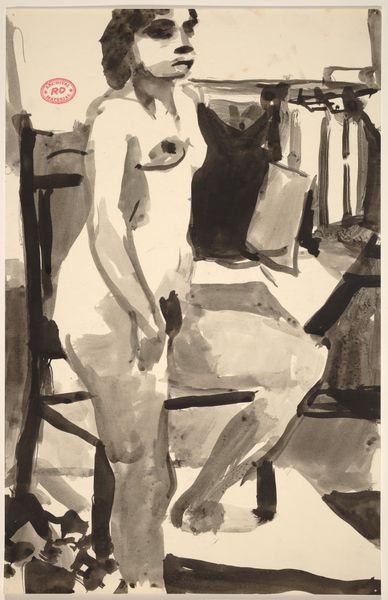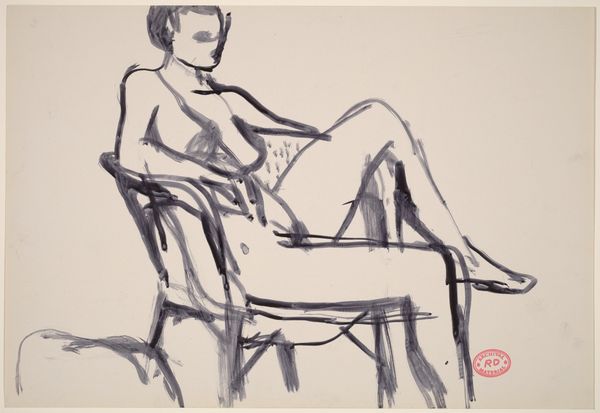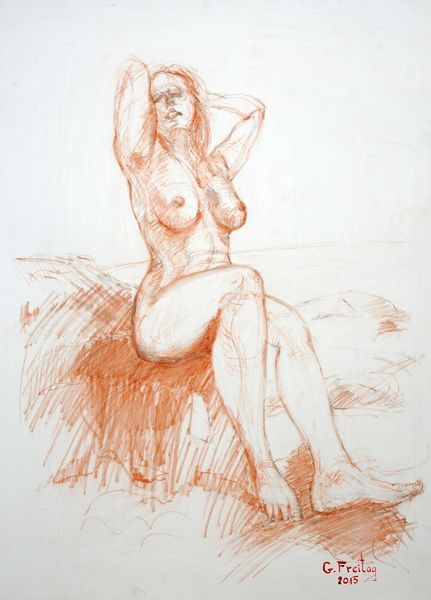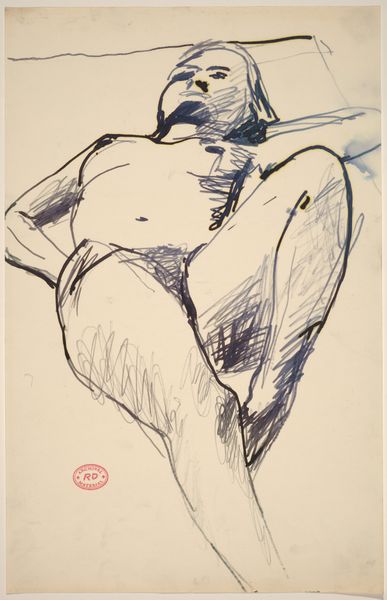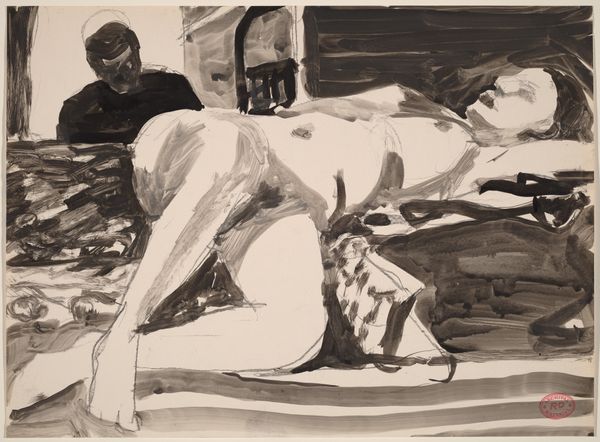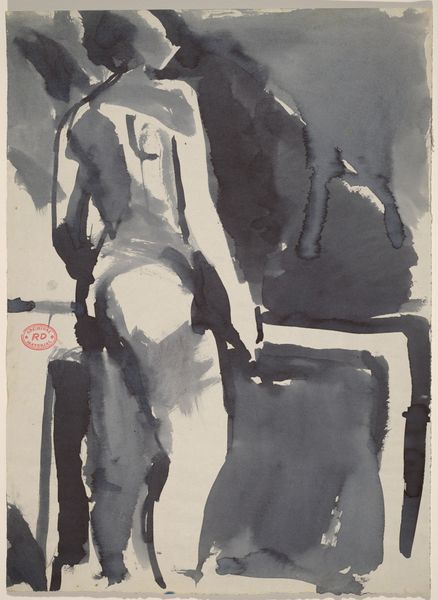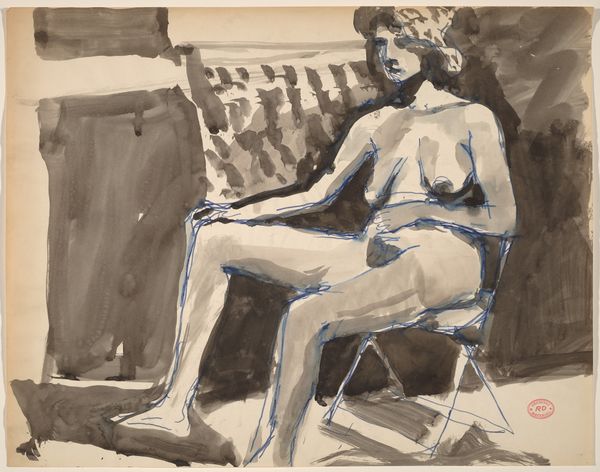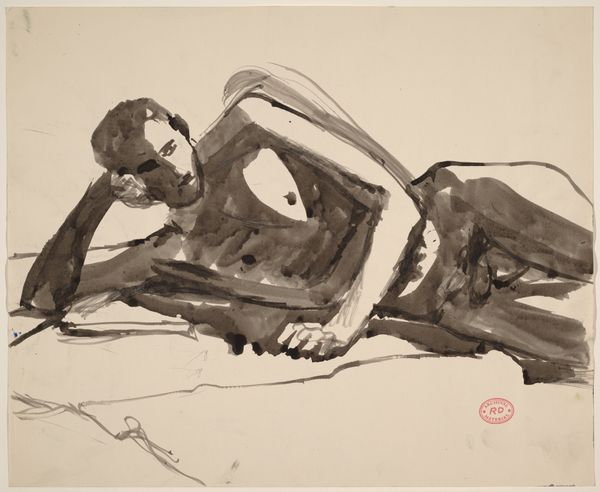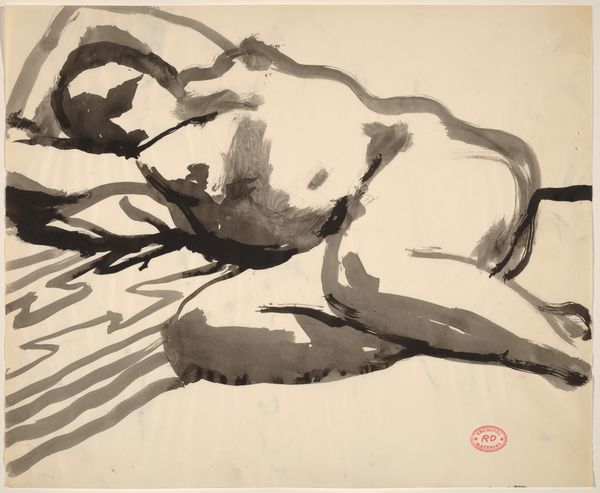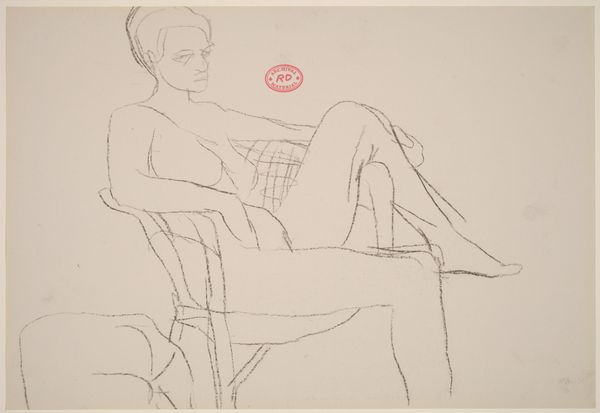
Copyright: Modern Artists: Artvee
Editor: This is Carrie Graber's photograph, "Del Marcos Hotel" from 2018. The architectural landscape is very clean, simple, but something about the people almost makes the scene seem artificial or staged. How do you interpret this work? Curator: This image activates several narratives related to the historical construction of leisure, race, and access. We might ask, whose leisure is being represented and whose is being excluded? Editor: That's interesting, I hadn't thought about it that way. Curator: Consider the Del Marcos Hotel itself, a mid-century modern landmark in Palm Springs. Palm Springs became a resort destination precisely by enacting and enforcing various forms of social segregation. Who had access to this paradise? How does that history inform the contemporary scene Graber depicts? Editor: So, you're saying that the photograph isn't just a pretty picture of a pool, but it is related to themes of social justice. Curator: Exactly. Look at the visual language Graber employs: the careful composition, the almost hyper-real clarity. Does that amplify or critique the exclusivity of the scene? Does the flatness of the composition perhaps reinforce a flattening or erasure of that history? What do you see when considering gender within such histories of place and access? Editor: I see what you mean. It feels deceptively idyllic. I'm going to think more about how leisure spaces can reflect larger societal power structures. Curator: Precisely, art allows us to dig below surface appearances and understand power structures! It reframes familiar spaces. Editor: Thanks, I learned a lot, especially thinking about how social context changes the meaning.
Comments
No comments
Be the first to comment and join the conversation on the ultimate creative platform.
